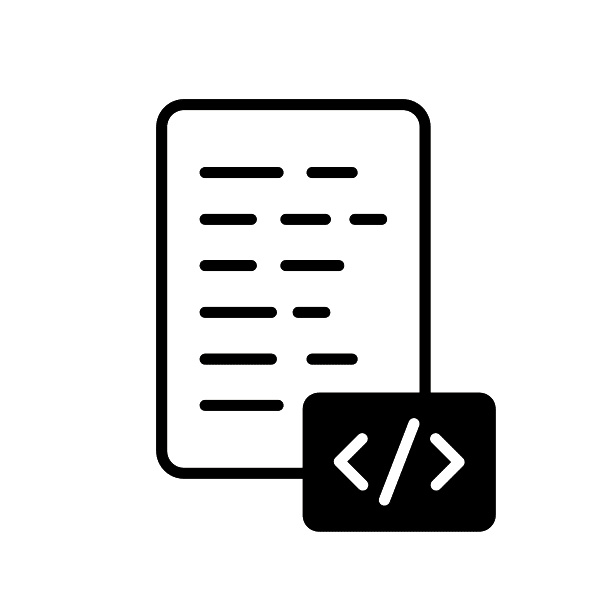Dive into machine learning with Python to convert your data into practical insights and forecasts!

Our teachers and tutors graduated from top universities








Overview

Customized curriculum
We'll find a tutor who can make sure you're prepared for the A-Level Accounting exam with customisable lessons catered to fit your needs.

Flexible
Take lessons only when you need them—as little or as many as necessary until you feel confident.

Private lesson
No need to accommodate other students. Learning is customised your perfect pace and difficulty so you are always improving.
About Python
Python’s ascent to becoming one of the world’s most widely-used programming languages has been remarkable. Its applications span across diverse sectors, from machine learning and data science to web development and cybersecurity.
A Universal Language:
Tech giants like Google, Facebook, and Netflix rely on Python for a multitude of tasks, including web services, data analytics, and machine learning projects. Google’s Search engine, for instance, leans on Python for essential components. Python’s dynamic typing and integrated data structures make it a perfect choice for rapid development and scripting on various platforms.
Beginner-Friendly, Yet Powerful:
Python’s user-friendliness is a major draw for newcomers. Its straightforward syntax allows learners to grasp the fundamentals without grappling with complex language rules. However, Python is anything but basic; it boasts an extensive standard library that supports numerous common programming tasks, including network communication, text parsing, and file handling.
Abundant Libraries and Frameworks:
Python’s ecosystem flourishes with a vast array of libraries and frameworks that amplify its versatility. For data manipulation, libraries like NumPy and pandas are go-to choices, while data visualization often relies on Matplotlib and Seaborn. Python has solidified its position as the primary language for machine learning, thanks to TensorFlow and scikit-learn.
Powered by a Collaborative Community:
One of Python’s standout features is its vibrant, collaborative community. This community continually contributes to an ever-expanding repository of libraries and frameworks. Python enthusiasts frequently collaborate and share resources through public repositories, fostering a culture that values open-source contributions.
In conclusion, Python is not just a tool for developers; it’s a technological phenomenon shaping the industry’s future. Its flexibility and accessibility make it an indispensable resource for anyone looking to advance in computer science or broaden their tech skill set.
Description
Join this course to gain expertise in data scrutiny, error identification, and precision enhancement. Learn techniques such as clustering, regression, and classification to boost algorithm accuracy. Master predictive modeling for personalized recommendations, applicable in real-world data science tasks and as a stepping stone to advanced studies and careers in machine learning and data analytics.
What you will learn
- Gain a solid foundation in machine learning principles.
- Proficiently apply Python-based approaches, including clustering, regression, and classification.
- Commence the creation of your neural network.
- Attain the skills to effectively analyze complex data sets.
Requirements
- Ages 13-18
- Basic knowledge of Python
- Able or willing to understand complex concepts
- Interested in future technology
Student FAQs About AI with Python
Python stands out as the preferred language for AI development due to several compelling factors:
Expressive and Readable: Python’s easy-to-understand syntax speeds up the AI development process, making the code easier to read and write.
Comprehensive AI Libraries: With libraries like TensorFlow, scikit-learn, and PyTorch, Python simplifies the complexities of AI tasks.
Community Engagement: A vibrant and large community offers a wealth of resources and support, aiding developers of all skill levels.
Adaptability: Python is highly flexible, capable of transitioning smoothly from prototype to production in AI projects.
Interconnectivity: Python excels in interfacing with other languages and platforms, enhancing its suitability for integrating AI into existing systems.
Data Visualization: With libraries such as Matplotlib and Seaborn, Python enables effective data exploration and presentation.
Educational Accessibility: Python’s beginner-friendly attributes create an inclusive learning environment for everyone, from AI novices to seasoned developers.
Python’s machine learning libraries, such as scikit-learn, TensorFlow, and PyTorch, elevate AI development by offering a wealth of pre-built algorithms tailored for both supervised and unsupervised learning. Particularly, TensorFlow and PyTorch equip developers with the essential components needed to construct and train neural networks, a cornerstone of deep learning in AI.
Certainly, Python excels in Natural Language Processing (NLP) tasks. It boasts specialized libraries like NLTK and spaCy, meticulously designed to handle various NLP functions, including sentiment analysis, text categorization, and even language translation. These libraries empower developers to create sophisticated AI applications capable of working effectively with human language.
Many of Python’s AI libraries are built on top of low-level languages like C and C++, enhancing computational efficiency. This becomes paramount when dealing with intricate AI models and vast datasets, which are typical scenarios in AI projects. Python’s ability to harness the computational prowess of lower-level languages ensures that AI tasks are executed efficiently.
Although Python may not be the fastest language by default, it remains a credible option for real-time AI applications. Its flexibility allows it to interface with languages like C/C++, and it can harness GPU acceleration when required. Python’s suitability for real-time AI implementations hinges on the specific needs of the project.
Python offers an extensive array of data analysis and visualization libraries, including NumPy, pandas, Matplotlib, and Seaborn. These tools are invaluable for AI tasks such as feature selection, model evaluation, and extracting insights from data patterns. Python’s robust ecosystem empowers AI practitioners to conduct comprehensive data analysis and craft compelling visualizations, thereby enhancing the effectiveness of AI projects.
How it works
1
Request a tutor
Let us know your goals and age range. We'll figure out a plan to help get you there.
2
Match with a tutor
We'll recommend you a tutor based on your needs and goals, or you can request a specific tutor.
3
Start a free trial
Experience a free trial lesson with your new tutor and see if your learning style matches.
4
Keep it up!
If everything went well, sign up to keep going! You can choose the pacing of the lessons
Need more info?
Let's talk.
Leave your phone number, and we’ll call you back to discuss how we can help you.


